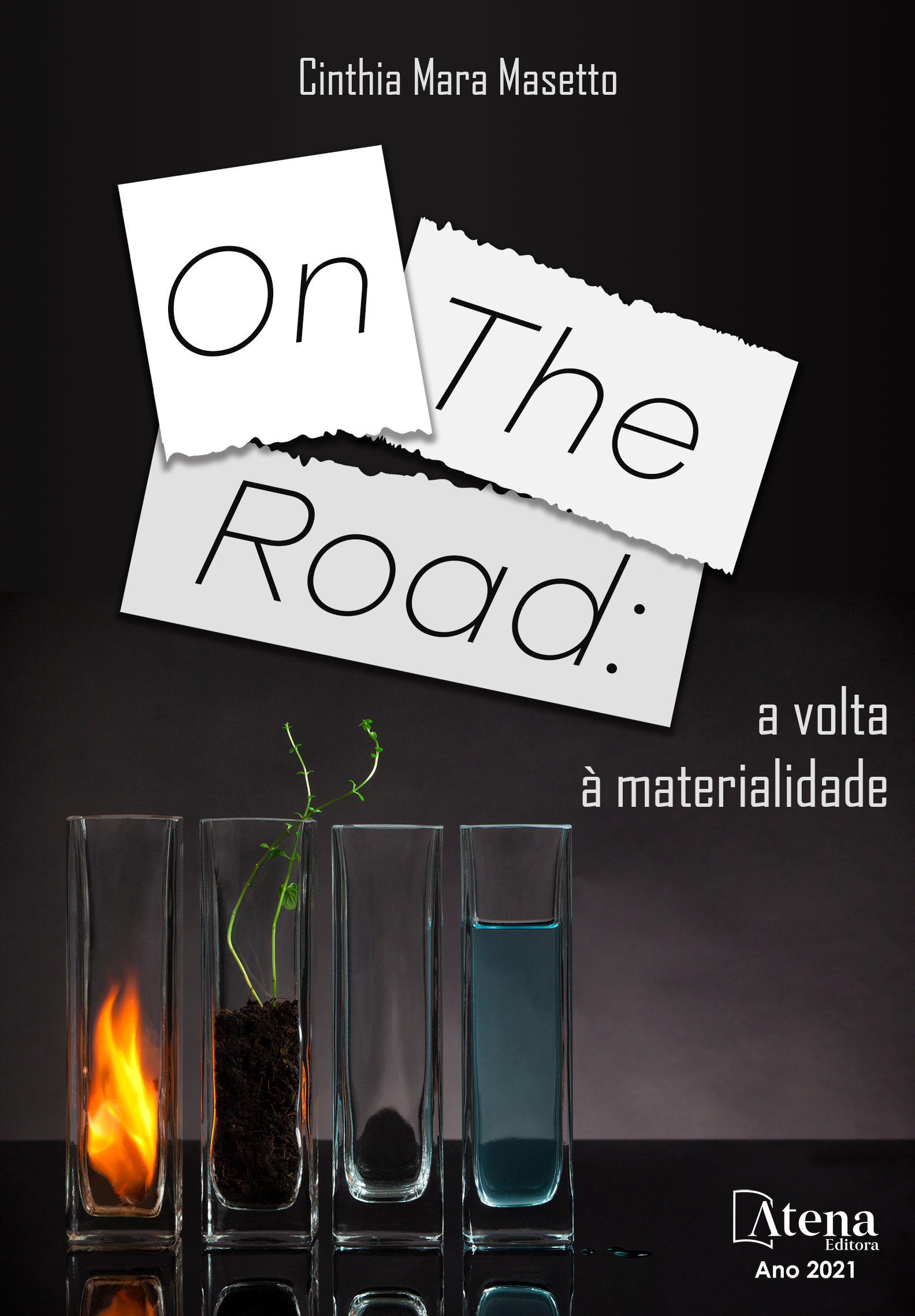
ON THE ROAD: A VOLTA À MATERIALIDADE
Esta dissertação objetiva verificar e compreender a materialidade presente na poética beat. O caminho por nós percorrido segue no sentido de aproximações e olhares a partir de proposições filosóficas. Ao tomarmos a arte como o modo de manifestação do artista sobre a realidade, tomamos também a filosofia como uma das possíveis perspectivas de ancoragem ao entendimento dos objetos culturais produzidos então por estes artistas. A filosofia contemporânea desde Descartes colocou o pensamento como único e exclusivo atributo do ser humano, o qual já havia tido o seu ensaio no “animal racional” de Aristóteles. Assim, realizamos uma primeira aproximação com a obra On the Road do escritor americano Jack Kerouac, publicada em 1957, lançando um olhar a partir das forças imaginantes suscitadas no devaneio provocado pela concretude da materialidade dos quatro elementos da natureza: água, terra, ar e fogo sob a ótica da filosofia Bachelard. Depois, procuramos compreender e relacionar a produção de presença por meio da tangibilidade do corpo e de como este possibilita ao homem expressar-se a agir sobre o mundo, problematizando a diluição do pensamento idealista e a volta do corpo, alicerçados pela proposta filosófica de Gumbrecht. Para completar, apresentamos a proposta filosófica do existencialismo conforme a teoria de Jean-Paul Sartre, a partir da conferência intitulada O existencialismo é um humanismo, por ele proferida em 1945. Como forma de alcançarmos nosso objetivo partimos da contextualização cultural dos Estados Unidos na década de 50. Na sequência, nos debruçamos sobre o movimento beat – do qual Kerouac foi um dos principais representantes. Para a compreensão deste movimento, voltamos ainda nosso olhar para outros dois grandes poetas beats: Allen Ginsberg e William Burroughs. Contextualizamos o caminho percorrido por Kerouac, elencamos alguns de seus personagens principais relacionando-os às pessoas que conviveram com o autor e passaram, assim, a compor o universo da obra e como receberam – personagens e fatos – o tratamento literário que a poética em prosa espontânea e o fluxo de memória de Kerouac se encarregaram de realizar. Desta maneira, fechamos nosso estudo estabelecendo uma relação entre os capítulos sequenciados de modo a relacionar a existência material e a liberdade, entendendo-as como formas de manifestação da poética beat.
ON THE ROAD: A VOLTA À MATERIALIDADE
-
DOI: 10.22533/at.ed.164212809
-
Palavras-chave: Materialidade. Perspectivismo. Geração Beat. Corporalidade.
-
Keywords: Materiality. Perspectivism. Generation beat. Corporality.
-
Abstract:
This dissertation aims to verify and understand the materiality present in beat poetics. The path we have gone through goes into the direction of approximations and perspectives from philosophical propositions. When we take art as the artist's way of manifestation about reality, we also take philosophy as one of the possible perspectives of anchoring the understanding of the cultural objects produced by these artists. Since Descartes contemporary philosophy has placed thought as an unique and exclusive attribute of the human being, which had already had its essay on Aristotle's "rational animal." Thus, we have made a first approach to the work On the Road by the American writer Jack Kerouac, published in 1957, casting a glance from the imaginative forces raised by the daydream provoked by the materiality of the four elements of nature: water, earth, air and fire under the point of view of Bachelard’s philosophy. In the sequence, we tried to understand and relate the presence production through the tangibility of the body and how it enables man to express himself when acting on the world, problematizing the dilution of idealistic thought and the return of the body, based on Gumbrecht’s philosophical proposal. In addition, we present the philosophical proposal of existentialism according to the theory of Jean-Paul Sartre, from the conference he held in 1945 entitled Existentialism is a humanism. As a way of reaching our goal, we started from the cultural context of the United States in the 1950s. We then turned to the beat movement - of which Kerouac was one of the main representatives. Aiming the understanding of this movement, we turned our gaze again into two other great beat poets: Allen Ginsberg and William Burroughs. We contextualized the route Kerouac, we casted some of his main characters relating them to the people who lived with the author and who began, thus, to compose the the universe of the work and how they received - characters and facts - the literary treatment that poetics in spontaneous prose and how Kerouac’s memory flow has taken charge of performing. Then, we finished our study establishing a relation between the sequenced chapters in order to relate material existence and freedom, understanding them as manifestations of beat poetics.
-
Número de páginas: 163
- CINTHIA MARA MASETTO


